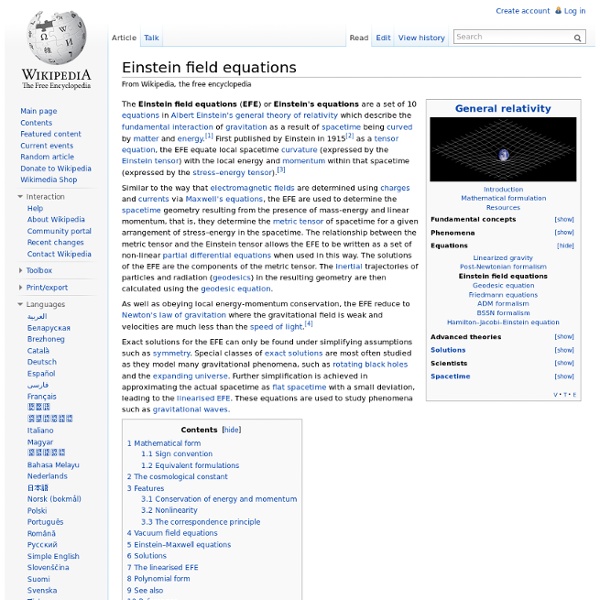Zoom
Trash
Related:



Spacetime In non-relativistic classical mechanics, the use of Euclidean space instead of spacetime is appropriate, as time is treated as universal and constant, being independent of the state of motion of an observer.[disambiguation needed] In relativistic contexts, time cannot be separated from the three dimensions of space, because the observed rate at which time passes for an object depends on the object's velocity relative to the observer and also on the strength of gravitational fields, which can slow the passage of time for an object as seen by an observer outside the field. Until the beginning of the 20th century, time was believed to be independent of motion, progressing at a fixed rate in all reference frames; however, later experiments revealed that time slows at higher speeds of the reference frame relative to another reference frame. Such slowing, called time dilation, is explained in special relativity theory. Spacetime in literature[edit] Mathematical concept[edit] is that
Mathematics of general relativity The mathematics of general relativity refers to various mathematical structures and techniques that are used in studying and formulating Albert Einstein's theory of general relativity. The main tools used in this geometrical theory of gravitation are tensor fields defined on a Lorentzian manifold representing spacetime. This article is a general description of the mathematics of general relativity. Note: General relativity articles using tensors will use the abstract index notation. Why tensors? The principle of general covariance states that the laws of physics should take the same mathematical form in all reference frames and was one of the central principles in the development of general relativity. Spacetime as a manifold[edit] Most modern approaches to mathematical general relativity begin with the concept of a manifold. The rationale for choosing a manifold as the fundamental mathematical structure is to reflect desirable physical properties. Local versus global structure[edit] At at .
Friedmann equations and pressure . The equations for negative spatial curvature were given by Friedmann in 1924.[2] Assumptions[edit] The Friedmann equations start with the simplifying assumption that the universe is spatially homogeneous and isotropic, i.e. the Cosmological Principle; empirically, this is justified on scales larger than ~100 Mpc. where is a three-dimensional metric that must be one of (a) flat space, (b) a sphere of constant positive curvature or (c) a hyperbolic space with constant negative curvature. Einstein's equations now relate the evolution of this scale factor to the pressure and energy of the matter in the universe. The equations[edit] There are two independent Friedmann equations for modeling a homogeneous, isotropic universe. which is derived from the 00 component of Einstein's field equations. is the spatial curvature in any time-slice of the universe; it is equal to one-sixth of the spatial Ricci curvature scalar R since in the Friedmann model. which eliminates to give: Here . . Set